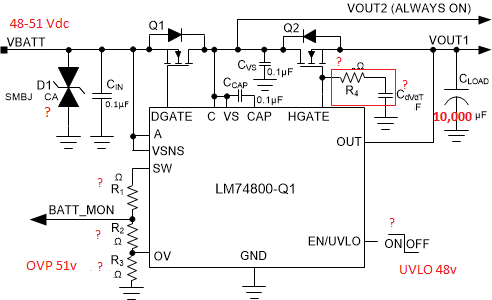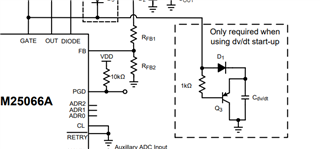Other Parts Discussed in Thread: LM74800-Q1,
Hello,
i need your help please...
i'm designing a new circuit with LM74800-Q1 (Ideal Diode Controller with inrush current limiting) my inputs are:
A) input voltage 48-51 Vdc
B) Current pass of 20A
C) i have choose 2 same N channels mosfets with low rds(on) of ~3.5-4.5 milliohms, (30A)
the needs from the circuit are :
1) Minimum forward voltage losses (low rds), with supporting current pass of 20A
2) Reverse Battery Protection
3) Reverse Current Protection
4) Inrush current limiting
5) Overvoltage Protection (above 51Vdc)
6) EN with under voltage protection (below 48Vdc)
also note that i have a Bulk capacitor at the output of 10,000uF, is there any consideration need to be taken about it ?
Please help me to figure out the exact values of the parts to reach those needs... (R1, R2, R3, R4, Cdvdt, D1, ENUVLO)
thanks in advance







